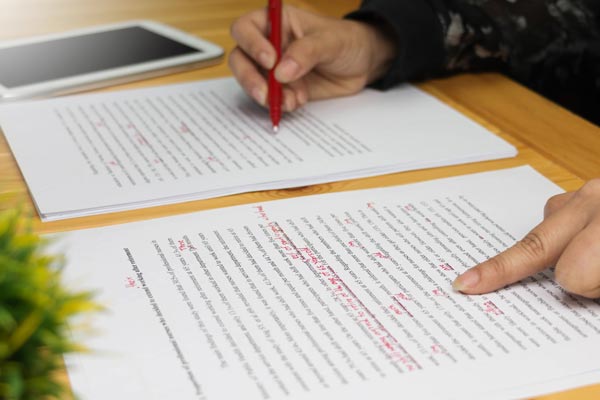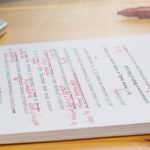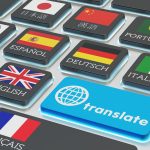
What Is Translation Memory Software and How Does It Work?
When large corporations invest in translation for their global operations, one of the most effective technologies at their disposal is translation memory software. This specialized system is designed to store segments of previously translated text, allowing them to be reused in future projects. By capturing translations at the segment level, companies can accelerate new projects, reduce repetitive work, maintain linguistic consistency, and lower costs. For businesses that produce technical manuals, product catalogs, marketing materials, or regulatory documents, translation memory (TM) is a crucial asset in their multilingual strategy.
Core Components of a Translation Memory System
Translation memory systems are built around a structured database that holds linguistic data. Understanding the core components will clarify how the software delivers its efficiency and accuracy.
The TM Database
At the heart of the software is the TM database, which stores translated text in paired segments. Each segment is typically a sentence or a string of words, aligned with its translation in the target language. These pairs are known as translation units (TUs). Over time, the database grows, capturing an organization’s translation history. With a large and clean database, translators can leverage previous work rather than starting from scratch on every project.
Integration with CAT Tools
Translation memory systems rarely operate in isolation. They are usually integrated with computer-assisted translation (CAT) tools, which provide translators with an interactive environment to view source texts, suggestions from the TM, and reference glossaries. CAT tools allow translators to accept, modify, or reject stored segments, and every decision feeds back into the memory database. This creates a feedback loop where the TM continuously improves in quality and relevance.
Metadata and Contextual Information
Modern TM software not only stores text but also preserves metadata such as date, project name, subject field, and translator identity. These additional details help identify the context in which a segment was created. For example, a technical term translated in a legal document may need to be adapted for a marketing brochure. Metadata allows teams to filter and apply the right translation for each context.
Integrating TM Software into Your Workflow
For large organizations, adopting TM software requires careful integration into existing translation workflows. When implemented correctly, it becomes a central pillar of multilingual communication.
- Initial Database Setup
Companies often begin by importing legacy translations into the TM. By aligning previously translated documents with their originals, teams create a robust foundation. This process, known as alignment, ensures that no prior work is wasted. - Ongoing Project Integration
As new documents are translated, the software suggests relevant segments from the memory. Translators confirm or refine these suggestions, and the updated versions are added to the database. The longer a company uses TM, the more valuable the database becomes. - Multi-Language and Multi-Industry Support
Enterprises operating across diverse industries often maintain multiple TMs, each tailored for a specific language pair or domain. A technical manual in German may have a separate TM from a marketing campaign in Spanish. This segmentation helps preserve quality and ensures the appropriate use of terminology. - Collaboration and Sharing
Cloud-based TM systems allow teams across the globe to access a centralized database in real time. This ensures consistency when multiple translators work on a single project simultaneously. Collaboration tools also streamline communication between project managers, translators, and reviewers.
Segment Matching and Fuzzy Logic Explained
A critical feature of translation memory software is segment matching. When a new source text is introduced, the software searches the database for exact or near matches.
- Exact Match: When a segment in the new text matches a stored segment word-for-word, the system retrieves the translation instantly.
- Fuzzy Match: Often, a new sentence is similar but not identical to a stored segment. The software uses fuzzy logic to evaluate how closely the two align. A percentage score (e.g., 85% match) indicates similarity. Translators then make minor edits to adapt the stored segment to the new context.
This combination of exact and fuzzy matches dramatically reduces repetitive work, especially in large technical projects where minor variations are common.
Benefits of Using Stored Translations
Translation memory software delivers clear advantages for corporations managing multilingual content on a large scale.
- Time Savings
With segment matches, translators no longer retype or retranslate repetitive text. This is especially beneficial in industries such as manufacturing, where product manuals often include recurring descriptions and instructions. - Consistency Across Documents
TM ensures that the same terms and phrases are used consistently across projects. Consistency is essential for brand voice, regulatory compliance, and customer trust. - Cost Reduction
Since translators spend less time on repetitive work, organizations save money. Many translation service providers offer discounts for repeated segments identified by TM, leading to measurable cost efficiency. - Scalability
As corporations expand into new markets, the TM database scales with them. Stored translations for one product line can be reused and adapted for new regions without starting from zero. - Improved Quality Control
With built-in metadata and reporting tools, translation memory systems provide transparency into how and when translations were produced. This traceability helps enforce quality standards across global operations.
Exporting TM Data for Reporting and Quality Control
TM software includes export functions that allow teams to analyze data beyond active projects. For example:
- Performance Reports: Managers can evaluate how much content was reused, how often fuzzy matches were accepted, and how much time was saved.
- Quality Audits: By exporting data, reviewers can track changes made by translators and measure adherence to glossaries and style guides.
- Regulatory Compliance: Certain industries, such as pharmaceuticals or finance, require documented translation processes. Exported TM data provides a verifiable record of linguistic decisions.
These reporting features make TM not just a translator’s tool but also a management resource for overseeing global language operations.
Tips for Maintaining a Clean Translation Database
Over time, a TM database can accumulate outdated, inconsistent, or low-quality segments. To ensure maximum effectiveness, organizations should follow best practices for database maintenance:
- Regular Audits
Conduct periodic reviews to remove obsolete or incorrect translations. This prevents old mistakes from reappearing in new projects. - Terminology Management
Integrate glossaries and style guides with the TM to enforce consistent terminology usage across projects. - Segmentation Rules
Customize segmentation to fit the type of content being translated. For example, legal documents may require stricter segmentation than marketing copy. - Version Control
Maintain version histories to ensure that updated translations replace older ones without losing traceability. - Access Management
Restrict editing rights to qualified linguists. Allowing unrestricted edits can compromise the integrity of the TM.
By following these practices, corporations can protect their investment and ensure the TM continues to provide accurate, efficient, and reliable translations.
Future-Proofing Corporate Translation with TM
Translation memory software is more than a productivity tool. It is a long-term asset that compounds in value with every project. By storing and reusing translated segments, corporations achieve faster turnaround times, consistent brand messaging, and significant cost savings. Integrated with CAT tools, the system becomes a central hub for managing multilingual communication at scale.
As global markets evolve, companies that invest in translation memory systems will be better positioned to adapt quickly and maintain linguistic accuracy across dozens of languages and industries.
If your organization is considering professional translation services supported by advanced TM technology, Etcetera Language Group, Inc. is ready to help. Our team provides document translation and desktop publishing services across a wide range of industries. With expertise in multiple languages, we deliver highly accurate translations, professional formatting, and exceptional customer service. Learn more at Etcetera Language Group, Inc. and discover how we can support your global communication needs.
More...
Categorised in: Translation Services





